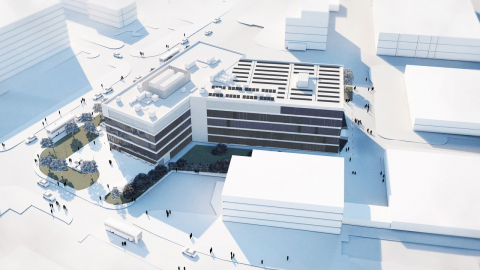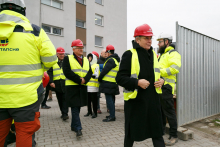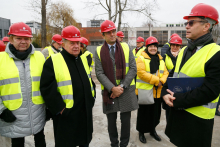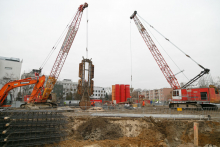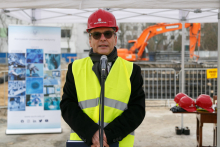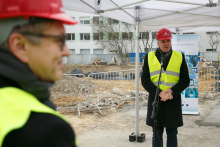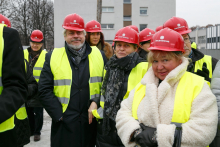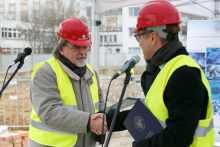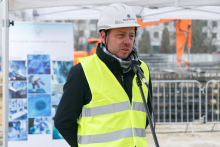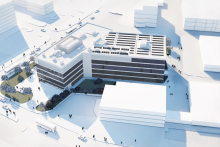The new Medical Simulation Center will serve as a multifaceted research and training center. Student will have access to safe and first class medical simulation training in many fields like surgery, intensive care, otolaryngology, anesthesiology, gynecology, obstetrics, emergency medicine and many more.
The new building will cover a total area of 21 400 m2 and have:
- 6 high-fidelity simulation rooms, including: operating theater, 2 intensive care units, a hospital emergency room, a delivery room, a high-fidelity nursing room and 6 control rooms
- 10 low-fidelity simulation rooms, including: 3 ALS simulation rooms, 3 BLS simulation rooms, 3 technical skills learning units and clinical skills laboratory learning unit.
- 12 auditoriums, including: nursing skills training room, obstetric skills training room and 10 OSCE exam rooms
- a dental training room and a cadaver center
The new Medical Simulation Center was designed by TPF Sp. z o.o.
Medical University of Warsaw’s Current Small Medical Simulation Centre
Since October 2017, a small Medical Simulation Centre has been in operation in the 2nd Department of Anesthesiology and Intensive Care of the Central Teaching Hospital. The Center has three high-fidelity simulation units with debriefing rooms: a delivery room, an operating theatre and an ambulatory care unit room. There are also four low-fidelity rooms which have five high-fidelity simulators: a childbirth simulator, 5-year old simulator, baby simulator, and two adult male simulators, as well as an ultrasound machine. Students learn and practice basic and advanced resuscitation procedures and technical skills, such as, improving airways patency, chest drainage, peripheral punctures in children and adults and catherization on a number of dummies for this purpose.
Fot. Michał Teprek
Department of Medical Photography MUW
